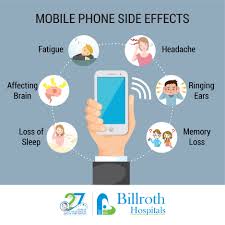Mobile App Development refers to the process of creating software applications specifically designed to operate on mobile devices, such as smartphones and tablets. It encompasses a comprehensive set of tasks, including conceptualization, design, coding, testing, and deployment, aimed at delivering functional and user-friendly applications. Developers employ various programming languages (e.g., Java, Swift, Kotlin) and development frameworks to create applications that can run seamlessly on different mobile operating systems like Android and iOS. The process often involves understanding user requirements, designing intuitive user interfaces, and integrating features that leverage the unique capabilities of mobile devices, such as GPS, cameras, and sensors. Mobile App Development is a dynamic field that constantly evolves with technological advancements. It also involves considerations for compatibility, security, and performance optimization to ensure a smooth user experience. The ultimate goal is to deliver innovative, reliable, and engaging applications that meet the needs and preferences of the mobile device users, addressing a wide range of industries and user scenarios.
Mobile app development has undergone a remarkable evolution over the past few years, transforming the way we interact with technology and reshaping various industries. From the advent of smartphones to the rise of innovative technologies like augmented reality (AR) and artificial intelligence (AI), the landscape of mobile app development is dynamic and ever-changing. This article explores the latest trends, emerging technologies, and future possibilities in mobile app development, providing a comprehensive overview of the current state of the industry.
I. The Current Landscape of Mobile App Development
1. Proliferation of Mobile Devices
The ubiquity of mobile devices has reached unprecedented levels, with billions of smartphones and tablets in use globally. This widespread adoption has created a massive demand for mobile applications across diverse sectors, from healthcare and finance to entertainment and education.
2. Platform Diversity: iOS vs. Android
The duopoly of iOS and Android continues to dominate the mobile operating system market. Mobile app developers face the ongoing challenge of catering to both platforms, each with its own set of design principles, development tools, and user expectations. The decision to prioritize one platform over the other often depends on the target audience, market considerations, and budget constraints.
3. User Experience (UX) and User Interface (UI) Design
In the competitive world of mobile apps, providing a seamless and intuitive user experience is paramount. App developers are focusing on creating visually appealing and user-friendly interfaces, employing principles of minimalism, responsive design, and interactive elements. The rise of dark mode and gesture-based navigation reflects the industry’s commitment to enhancing user experience.
4. Integration of Artificial Intelligence (AI) and Machine Learning (ML)
AI and ML are becoming integral components of mobile app development, offering personalized experiences, predictive analytics, and automation. From chatbots and virtual assistants to recommendation algorithms, these technologies are enhancing the functionality and intelligence of mobile applications.
II. Emerging Trends in Mobile App Development
1. 5G Technology
The rollout of 5G networks is transforming the mobile app landscape by delivering faster speeds and lower latency. This opens up new possibilities for real-time applications, augmented reality (AR), virtual reality (VR), and the Internet of Things (IoT). Developers are leveraging 5G capabilities to create immersive and responsive mobile experiences.
2. Augmented Reality (AR) and Virtual Reality (VR)
AR and VR technologies are pushing the boundaries of mobile app development, offering immersive experiences in gaming, education, healthcare, and more. From AR-enhanced navigation apps to VR-based training simulations, developers are exploring innovative ways to leverage these technologies and create engaging content.
3. Internet of Things (IoT) Integration
The interconnectedness of devices through the Internet of Things is influencing mobile app development. Smart homes, wearables, and industrial applications are leveraging mobile apps to provide users with control and monitoring capabilities. The development of IoT-enabled apps requires a focus on security, scalability, and seamless integration with various devices.
4. Progressive Web Apps (PWAs)
Progressive Web Apps combine the best of web and mobile app experiences, offering users the convenience of instant access without the need for installation. PWAs are gaining popularity due to their offline capabilities, fast loading times, and cross-platform compatibility. Developers are increasingly adopting this approach to reach a broader audience and simplify the development process.
5. Edge Computing
The shift towards edge computing is influencing mobile app development by reducing latency and enhancing performance. Edge computing involves processing data closer to the source rather than relying solely on centralized cloud servers. This trend is particularly significant for applications that require real-time responsiveness, such as gaming and augmented reality.
III. Tools and Technologies Shaping Mobile App Development
1. Cross-Platform Development Frameworks
Cross-platform development frameworks, such as React Native, Flutter, and Xamarin, are gaining popularity among developers. These frameworks allow for the creation of apps that run seamlessly on multiple platforms with a single codebase, streamlining the development process and reducing time-to-market.
2. Low-Code and No-Code Development Platforms
The rise of low-code and no-code development platforms is democratizing app development, enabling individuals with limited coding skills to create functional applications. These platforms offer a visual interface and pre-built components, accelerating the development cycle and empowering businesses to rapidly prototype and deploy apps.
3. DevOps and Continuous Integration/Continuous Deployment (CI/CD)
DevOps practices and CI/CD pipelines are becoming standard in mobile app development, promoting collaboration between development and operations teams. These practices streamline the development lifecycle, ensuring faster releases, improved code quality, and better responsiveness to user feedback.
4. Blockchain Integration
Blockchain technology is finding applications in mobile app development, particularly in sectors like finance, healthcare, and supply chain. Decentralized apps (DApps) built on blockchain offer enhanced security, transparency, and trust. The integration of blockchain can also facilitate secure in-app transactions and data management.
IV. Challenges and Considerations in Mobile App Development
1. Security and Privacy Concerns
As mobile apps handle increasingly sensitive data, security and privacy concerns are at the forefront of development challenges. Developers must implement robust security measures, including encryption, secure authentication, and regular security audits, to protect user data from potential threats.
2. App Monetization Strategies
Choosing the right monetization strategy is crucial for the success of a mobile app. Developers must carefully consider whether to offer the app for free with in-app purchases, adopt a subscription model, or use advertisements. Striking the right balance between user experience and revenue generation is a continuous challenge.
3. Fragmentation and Compatibility Issues
The diverse range of devices, screen sizes, and operating system versions poses challenges for developers in ensuring compatibility and a consistent user experience across various platforms. Thorough testing and optimization are essential to address fragmentation issues and deliver a seamless experience to users.
4. User Acquisition and Retention
In the highly competitive app market, acquiring users and retaining them pose significant challenges. Effective marketing strategies, user engagement tactics, and continuous updates based on user feedback are essential for building a loyal user base.
V. Future Possibilities and Innovations in Mobile App Development
1. Edge AI and Edge Computing Advancements
The convergence of AI and edge computing is poised to revolutionize mobile app development. Edge AI, where AI algorithms run on edge devices rather than centralized servers, will enable faster decision-making and enhanced user experiences. This shift towards on-device processing aligns with the growing emphasis on privacy and data efficiency.
2. Extended Reality (XR)
Extended Reality, encompassing AR, VR, and mixed reality (MR), is expected to play a central role in the future of mobile app development. From virtual shopping experiences to immersive educational content, XR technologies will continue to redefine the way users interact with digital information and environments.
3. Voice-Activated Apps and Natural Language Processing (NLP)
The integration of voice-activated features and natural language processing is set to become more prevalent in mobile apps. Virtual assistants and voice commands are evolving, offering users a hands-free and intuitive way to interact with applications. NLP advancements will contribute to more accurate and context-aware voice interactions.
4. Quantum Computing Impact
While still in its infancy, the potential impact of quantum computing on mobile app development is a topic of exploration. Quantum computing has the potential to revolutionize data encryption, optimization algorithms, and complex computations, opening new frontiers for innovative and powerful mobile applications.
Mobile app development stands at the intersection of technological innovation and user-centric design, shaping the way we engage with information and services. The journey from basic utility apps to immersive, intelligent, and interconnected experiences has been marked by constant evolution. As we navigate the current landscape of mobile app development, it’s clear that staying abreast of emerging trends, leveraging cutting-edge technologies, and addressing evolving challenges are key to creating successful and impactful mobile applications. The future promises even greater possibilities, with advancements in AI, XR, edge computing, and quantum computing set to redefine the boundaries of what mobile apps can achieve. The mobile app development journey is an exciting and dynamic one, offering developers and users alike a glimpse into the limitless potential of technology.
Conclusion
Mobile app development has evolved into a transformative force, shaping the way individuals and businesses interact with technology. The relentless innovation in this field has resulted in a diverse array of applications that cater to virtually every aspect of modern life. From enhancing communication and productivity to revolutionizing entertainment and commerce, mobile apps have become indispensable tools. The dynamic nature of the mobile app development landscape is marked by continuous advancements in technologies like AI, AR, and IoT, opening up new possibilities for enriching user experiences. The widespread adoption of smartphones globally has fueled the demand for intuitive and feature-rich applications, prompting developers to focus on creating solutions that are not only functional but also user-friendly. Moreover, the app ecosystem has witnessed a surge in cross-platform development frameworks, fostering efficiency and cost-effectiveness. Collaboration and community-driven initiatives have also played a pivotal role, fostering a vibrant developer community. Looking ahead, the trajectory of mobile app development promises further sophistication, with an emphasis on user personalization, security, and seamless integration with emerging technologies. As mobile devices continue to play an integral role in our daily lives, the impact of mobile app development is poised to endure, steering us towards an increasingly interconnected and technologically empowered future.







Leave a Reply